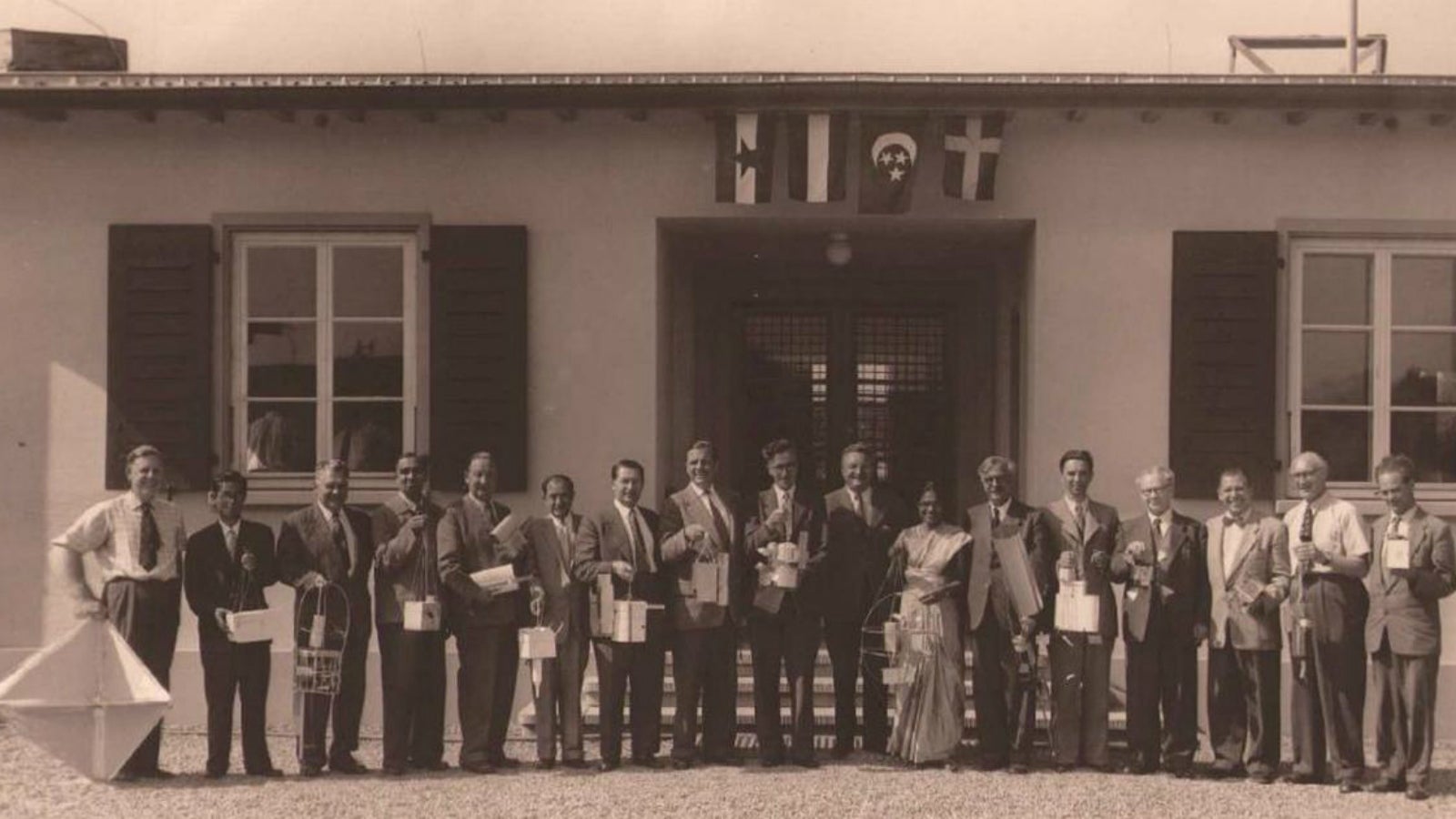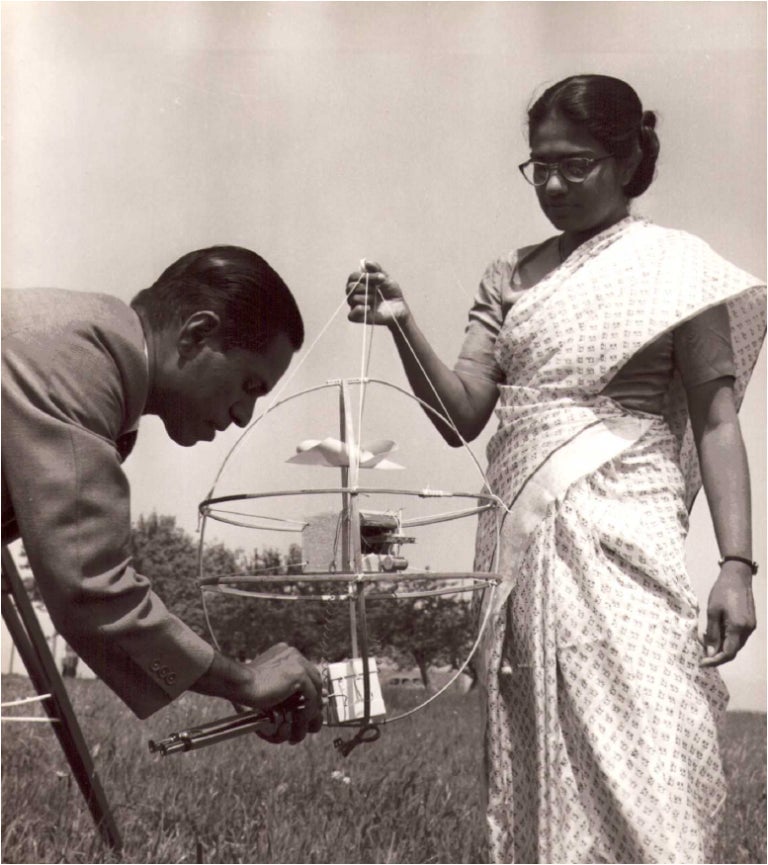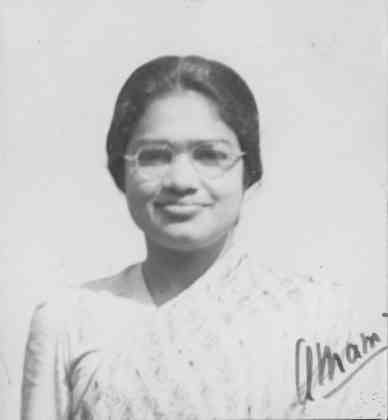The forgotten female scientist who taught India how to forecast weather
A few years ago, independent journalist Nandita Jayaraj came across an anthology of essays on Indian women in science. Titled Lilavati’s Daughters, the collection featured stories of nearly 100 female scientists—from the Victorian era to contemporary times–but what caught Jayaraj’s attention was the biographical sketch of Anna Mani.


A few years ago, independent journalist Nandita Jayaraj came across an anthology of essays on Indian women in science. Titled Lilavati’s Daughters, the collection featured stories of nearly 100 female scientists—from the Victorian era to contemporary times–but what caught Jayaraj’s attention was the biographical sketch of Anna Mani.
Mani, who was born on Aug. 23, 1918, was a physicist and a meteorologist and had served as the deputy director general of the Indian Meteorological Department. A student of CV Raman, she made independent India self-reliant in measuring aspects of the weather, and helped lay the ground for harnessing solar and wind power as alternative sources of energy. Despite these achievements, Jayaraj was surprised her story wasn’t more widely known.
“I got attracted to Anna Mani’s story because she was working in a field that is relatable to all of us—the weather,” Jayaraj said. She wanted to write a light-hearted story for a young audience about a real-life Indian female scientist. In Mani, she found her perfect protagonist. Anna’s Extraordinary Experiments with Weather, written by Jayaraj and illustrated by Priya Kurian, is a picture book that recreates the life and times of Mani.
The book, which was released this summer by Pratham Books and is available online for free in multiple languages, goes beyond being a straightforward biographical account that lists Mani’s numerous accomplishments. There is a sense of her personality in it. For Anna’s Extraordinary Experiments with Weather, Jayaraj drew on the work of Abha Sur, a science historian from the Massachusetts Institute of Technology, who provided glimpses of Mani’s wit and good humour in her essay in Lilavati’s Daughters.
The first time Sur interviewed Mani was in 1992. Mani had retired from the Indian Meteorological Department in 1976 and was working at the Raman Research Institute in Bengaluru. Sur still remembers their meeting vividly. Turning to a colleague, Mani remarked: “Meet Dr Sur. She is from America and thinks I am history.” Though in her seventies, her life was anything but inactive—apart from her work at the Raman Research Institute, she was also writing books and editing scientific journals.
Over the course of her interactions with Mani, Sur was able to gather important details of her life. Mani was born in a Syrian Christian family in Travancore (the former princely state in south India, now part of Kerala). Her father, a civil engineer and owner of cardamom estates, taught his children not to accept any statement unless it could be tested and verified—pertinent advice for a future researcher and builder of precision instruments.

Mani and her siblings often took long walks in the rainforests around the estate, watched birds, and swam in the backwaters and rivers. In her essay, Sur wrote: “The Mani family was a typical upper-class professional household where from childhood the male children were groomed for high-level careers, whereas the daughters were primed for marriage. But Anna Mani would have none of it. Her formative years were spent engrossed in books.” Mani quickly ran through the Malayalam books in the local library. On her eighth birthday, she asked for—and got—the Encyclopaedia Britannica set instead of her family’s traditional gift of diamond earrings.
When Mani was seven, Mahatma Gandhi visited her hometown. Among other things, Gandhi spoke about the importance of self-reliance and boycotting foreign goods. Deeply influenced, Mani took to wearing khadi. All through her life, she dressed simply, shunning jewellery, but had an undeniably commanding presence.
Mani completed her Bachelor’s degree in physics in 1939 from Presidency College in Chennai. She then worked as a demonstrator at the Women’s Christian College in the same city. On the advice of a professor, she went to the Indian Institute of Science, Bengaluru, to conduct original research. At CV Raman’s laboratory, Mani studied the spectra of rubies and diamonds. And in 1945, she submitted her doctoral thesis to the Madras University.

Around the same time, the Indian government had announced scholarships for internships abroad in various fields and was looking for candidates interested in meteorological instrumentation. Mani applied, and soon she was aboard a troopship to England to learn about the science that deals with the atmosphere, its phenomena, and the tools needed to make measurements for weather-forecasting. Three years later she returned to India and joined the Indian Meteorological Department, Pune. A programme to design weather instruments was taking shape at the department, and under Mani’s leadership, it flourished. In the 1960s, they were manufacturing close to 100 weather-measuring instruments.
“Wrong measurements are worse than no measurements at all,” was Mani’s motto. She worked with members of the World Meteorological Organisation to rigorously compare measurements to verify the accuracy of Indian instruments. After that her focus was the instrumentation meant to measure solar radiation, taking into account its seasonal and regional variation across India. And by 1964, Mani became involved in the ozone-monitoring efforts in India.
The country already had stations to measure ozone since the 1940s–well before the role of the gas in shielding life on earth from harmful radiation was understood. But it was Mani’s team that in 1967, developed the Indian ozonesonde, a balloon-borne instrument to measure ozone levels. Thanks to the efforts of Mani’s team—including updation of ground-based equipment—researchers had enough data work with, when the ozone hole became a hot-button subject. For her work on ozone-level measurements from 1960 to 1990, Mani received a citation from the International Ozone Commission.
In the 1980s, Mani published the Handbook of Solar Radiation Data for India and Solar Radiation over India. Her colleague CR Sreedharan wrote in a tribute that both these books became Bibles for those engaged in the design and deployment of solar thermal systems in India. During the same time, she started a company that made precision instruments to measure solar radiation and wind speed and worked on projects for harnessing wind energy.
Mani’s life was not always about science. “I should be most unhappy to wake up without the prospect of some work to do,” she said in an interview in the World Meteorological Organisation bulletin in 1991. “But when I have done it, I enjoy reading and listening to music.” She was a nature lover and her pet dogs kept her active. She travelled extensively for work and also visited places such as Nainital and the Andamans for recreation, as her friend from her Indian Institute of Science days, Violet Bajaj, recollects. Mani, who did not marry, suffered a stroke in 1994 and died in 2001.
Anna’s Extraordinary Experiments with Weather provides an insightful glimpse into Mani’s life. Though Jayaraj intended the book for a young audience, it seems to have struck a chord with readers of all ages. K VijayRaghavan, principal scientific advisor to the Indian government, tweeted in April: “A wonderful book. Will be great to have this, and others, in more of our languages.” A mother of a young child wrote to Jayaraj saying her daughter loved the book and wants to become a scientist.
Sur wrote in her essay that Anna Mani “transcended the limited cultural spaces available to her and not only created a room of her own and a laboratory of her own but [also] a whole workshop, a mini factory of her own”. The sari-clad researcher is a role model a hundred years after her birth, and if Jayaraj’s book is an indication, she may continue to be a beacon for generations to come.
This piece was first published on Scroll.in. We welcome your comments at [email protected].